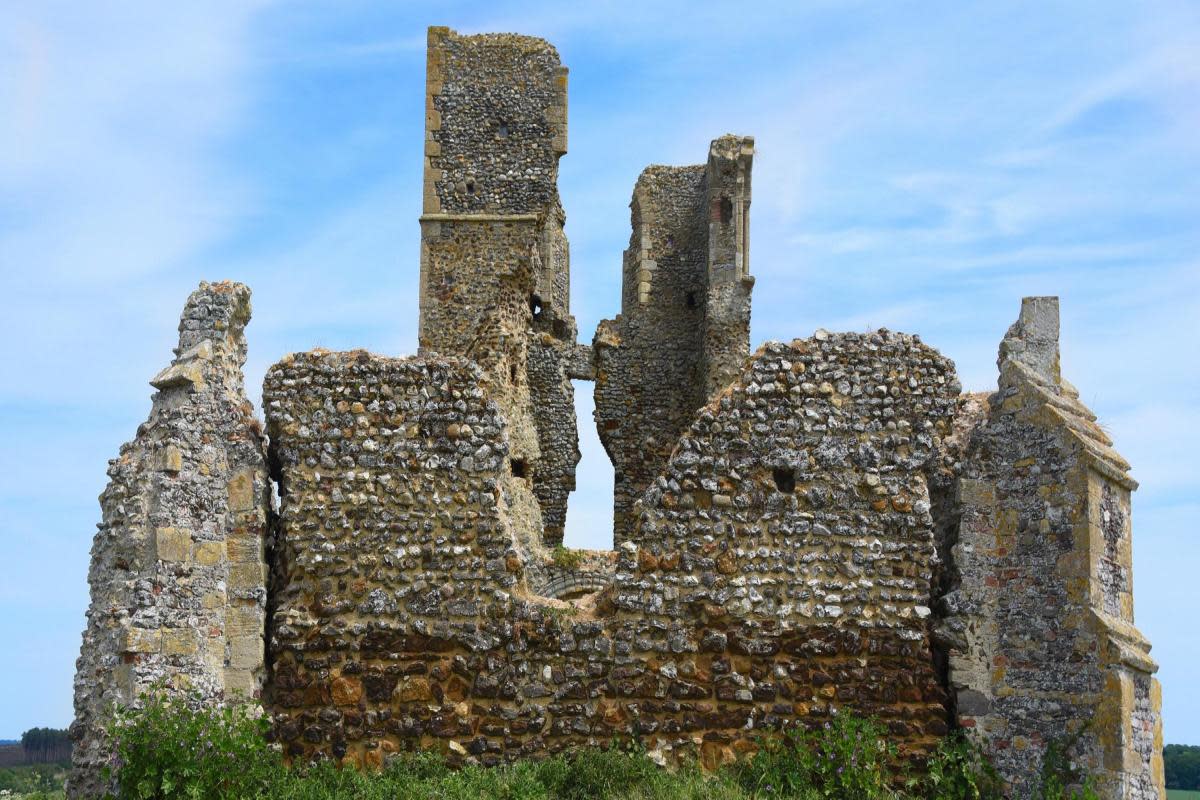5 abandoned local landmarks that tell tales of times gone by

Norfolk is a county with a long, rich history and historic architecture still exists to prove it.
From churches to hospitals, here is a list of five abandoned landmarks that have survived to tell tales of times gone by.
1. Baconsthorpe Castle
The Baconsthorpe Castle ruins are currently managed by English Heritage (Image: Ian Burt)
Baconsthorpe Castle was originally a manor home established by the Heydon family in the 15th century in Baconsthorpe, near Holt.
By the end of the 16th century, the Heydons were struggling financially and had to remortgage the property.
This situation was worsened when Sir John Heydon III fought for the Royalists in the English Civil War and was declared a delinquent.
In 1650, they began to demolish the home to sell the stonework - only the outer gatehouse was kept intact and was used as a private home until 1920.
The ruins are now Grade I and II-listed and managed by English Heritage which opens them to the public.
2. Brograve Mill
The Brograve Mill is a disused windpump which sits in the parish of Sea Palling.
It was built in 1771 to drain water from the Brograve level into the man-made Waxham New Cut.
The mill remained in operation until around 1930 when it became derelict.
READ MORE: Victorian Gallopers restored at Strumpshaw Steam Museum
It is now a Grade II-listed site and people are strongly discouraged from trying to enter due to structural safety concerns.
The building notably leans to one side which, over time, has sparked a myth that the devil was angry with the efforts to drain the Brograve and tried to blow it down.
3. St Benet's Abbey
The former monastery sits deep in the Norfolk Broads (Image: James Bass)
The Abbey of St Benet at Holme is a medieval monastery two miles south of the Broads village of Ludham.
The monastery is believed to date back to the ninth century and was the only English monastery not closed down by Henry VIII.
It largely fell out of use after this period due to its inaccessible location and today the ruins are free to visit during daylight hours.
4. St James' Church
The church is a final reminder of the lost village of Bawsey (Image: Denise Bradley)
This 11th-century church historically served the parish of Bawsey to the east of King's Lynn.
Bawsey's population fell rapidly in the 16th century when 60 acres of the village were repurposed as pasture.
READ MORE: 21 photos of Norfolk schools in the 1960s, 70s and 80s
Historians believe the church stopped being used by 1557 and has been documented as a site of ruins since the mid-1700s.
Its remains can still be seen atop a hill and have become a common landmark for people who drive past to look out for.
5. St Andrew's Hospital
The hospital caught alight in October 2023 (Image: Sonya Duncan)
St Andrew's Hospital was one of the first asylums of its kind, being built as an addition to the Norfolk Lunatic Asylum which was completed in 1881.
It later closed as an NHS hospital in 1998 and has been left derelict ever since.
In 2016, planning applications to turn the site into a business park were lodged but this has not yet come to fruition.
In October 2023 the building caught light and 42 firefighters were called out to the blaze.
The site remains unsafe for the public.

 Yahoo News
Yahoo News 
